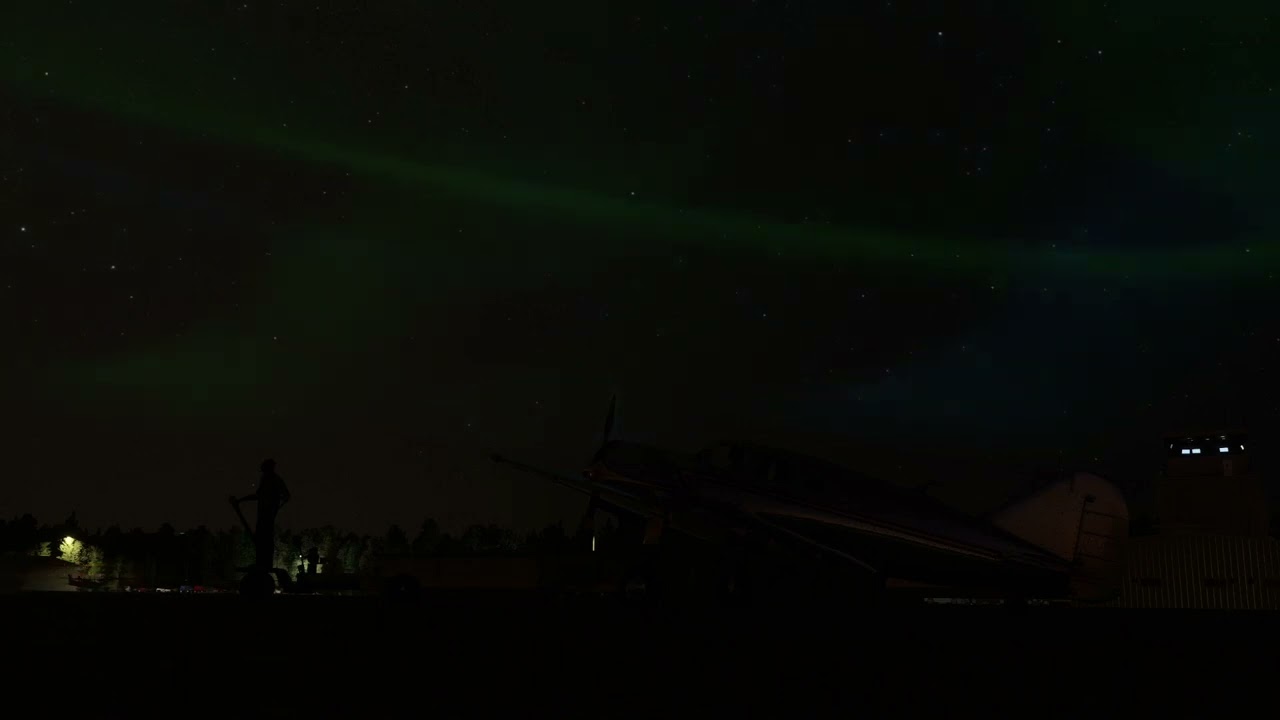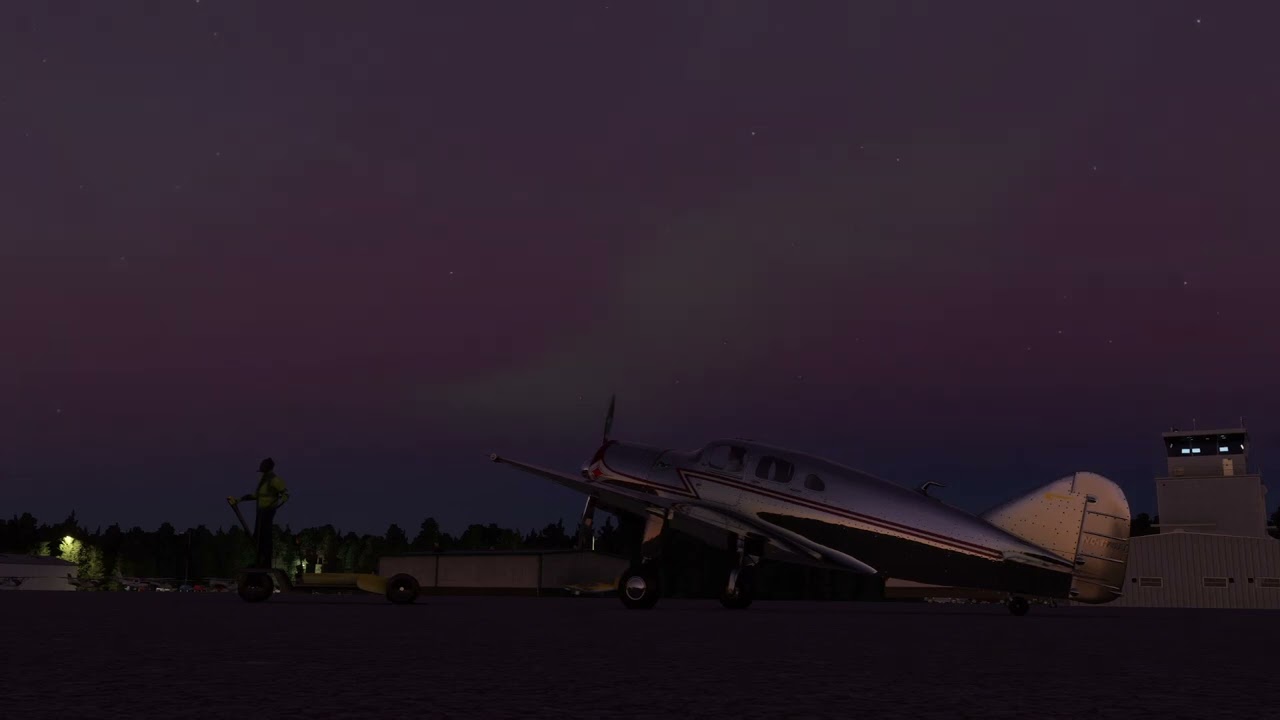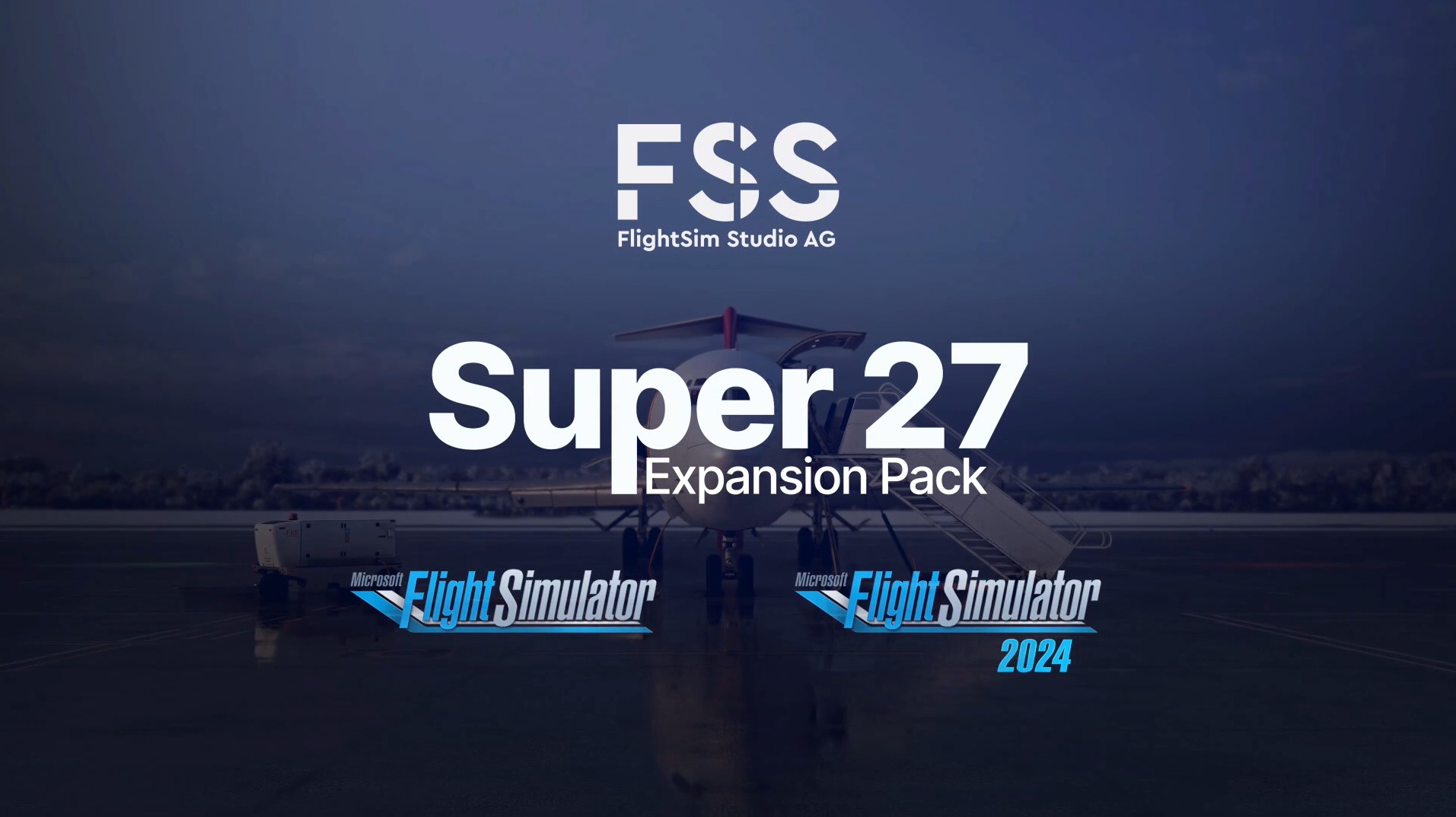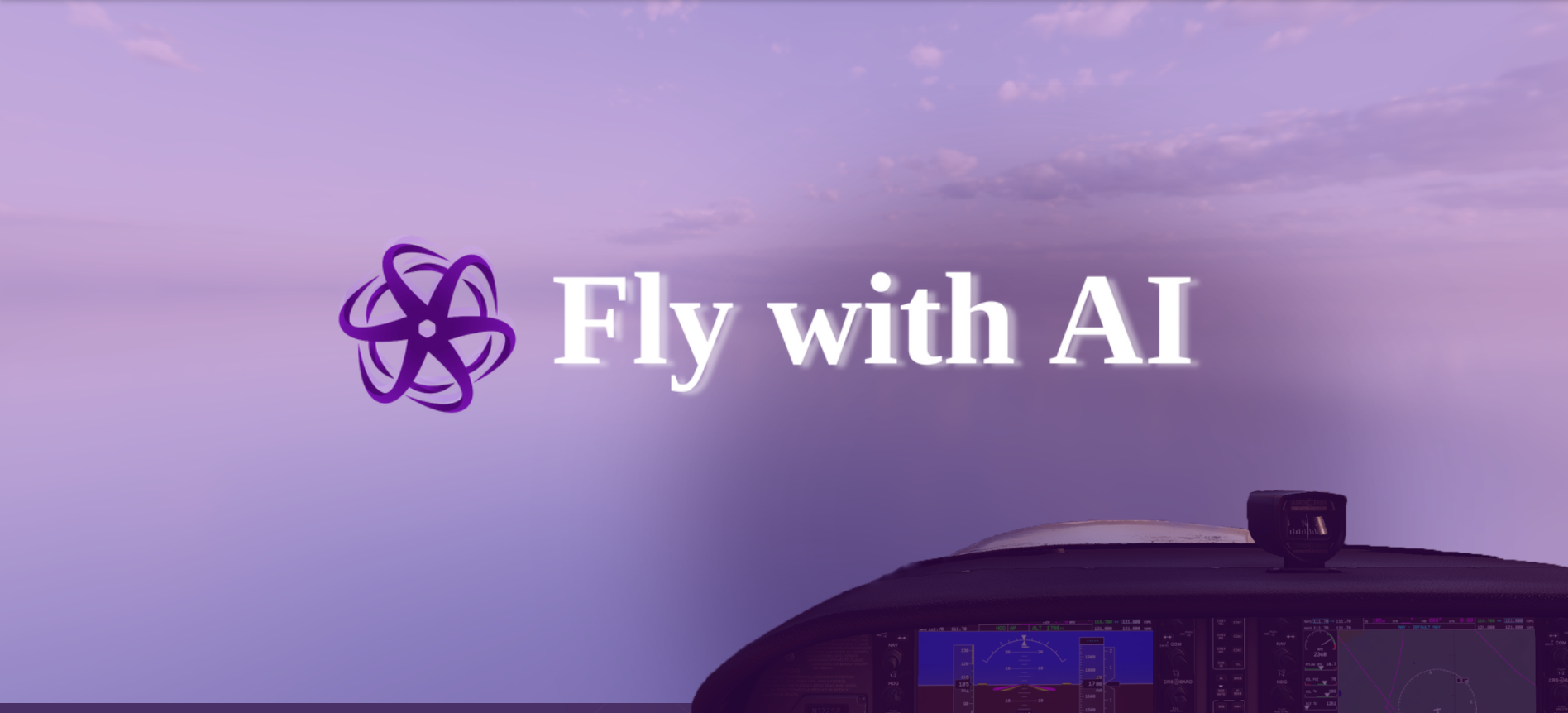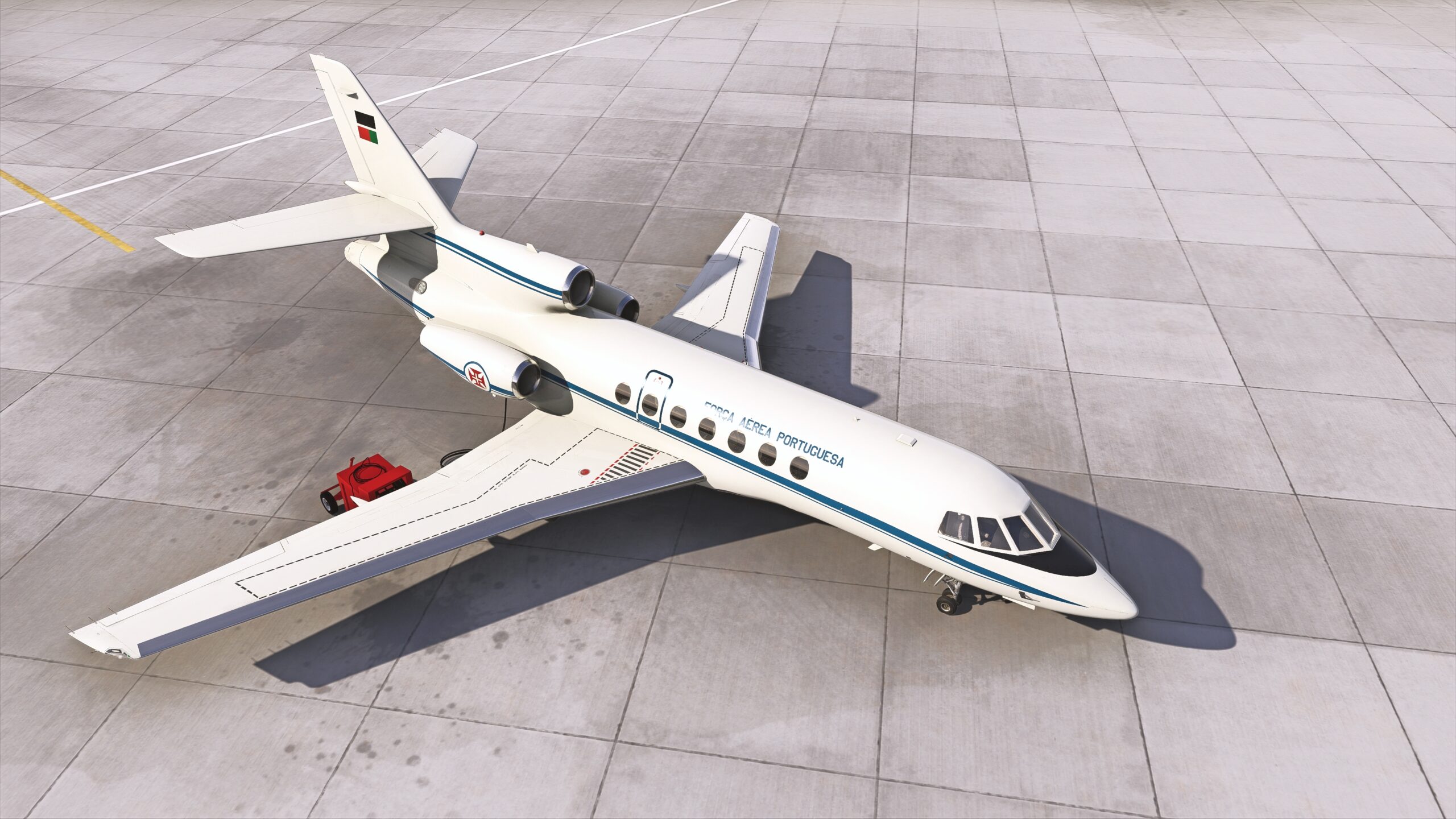The SOUTHOAKCO Aurora Borealis for MSFS released right into a very busy July, bustling with some of the most anticipated aircraft releases in the sim’s history. It would be easy to overlook this product. After all, it “only” adds the Northern Lights – a phenomenon that can only be seen on special occasions, in certain northern regions. And if, like me, you’ve never seen one in person, it would be so easy to not miss its absence.
When looking for the best MSFS add-ons, we often get wrapped up in the flashiness of powerful aircraft, true-to-life sceneries, and utilities that change the game. SOUTHOAKCO’s Aurora Borealis: Northern Lights for MSFS is the latest in their extensive series of “Flight Sim Enhancements” that subtly enhance immersion by adding things such as birds and unexpected VFR traffic. The Aurora Borealis is something that you might see on one out of every twenty flights – but it will keep you flying north, turning those boring, overnight flights into a symphony of color.

Review Setup
My SOUTHOAKCO Aurora Borealis: Northern Lights for MSFS review was conducted on a PC copy of Microsoft Flight Simulator. I sim on an ultrawide monitor, and a reasonably powerful PC with an AMD Ryzen 5800X3D, Nvidia RTX 3080, and 64GB of RAM. All currencies mentioned in the review are in $USD. The copy of the SOUTHOAKCO Aurora Borealis: Northern Lights for MSFS that I reviewed was kindly provided by SOUTHOAKCO, LLC; however, the opinions and conclusions in this review, as always, remain my own.
Note: The images in this review are best viewed in Dark Mode. Enable Dark Mode on FSNews by clicking or tapping the light bulb next to the search bar at the top of the page.
Scientific Spectacle
The Aurora Borealis – the “Northern Lights” – is a natural phenomenon that occurs in high-latitude regions of the Northern Hemisphere (The Aurora Australis is the Southern counterpart). They are created when high-energy particles, discharged from the Sun in the solar wind, disturb the earth’s Magnetosphere and result in the ionization of the gases in the upper atmosphere. They can range from mild glows at the horizon to dramatic, erupting bands of vibrant color, depending on the solar activity that creates them.

To experience the Aurora Borealis on terra firma you typically have to travel to the inhospitable environments of high northern latitudes – such as the Alaskan or Canadian wilderness. However, aircraft transit these latitudes on a regular basis to and from mundane locations, bringing the Aurora within reach. They have become a stalwart companion to polar pilots and passengers and SOUTHOAKCO, LLC. has endeavored to bring that experience into Microsoft Flight Simulator.
SOUTHOAKCO Aurora Borealis for MSFS Purchase & Installation
The SOUTHOAKCO Aurora Borealis is available on SimMarket for $8.68 (€7.99) or from the MSFS Marketplace for $7.99 and is compatible with Xbox if purchased via the Marketplace. At the time of this writing, there are savings available via SimMarket for owners of select other SOUTHOAKCO add-ons. If purchased from the Marketplace, installation is handled via Microsoft Flight Simulator. If purchased from SimMarket, the bespoke installer will detect your MSFS installation and give you the option to install in an external folder, if desired.
I had minor issues with the installation. SOUTHOAKCO provided a version of the Aurora Borealis with the installer, and when letting it auto-detect my Steam MSFS installation, the add-on didn’t work. I was unable to actually find the folder it auto-installed to when poking around in the file structure. However, I was easily able to direct it to my external add-ons folder, then use MSFS Addons Linker to add it to the Community folder. If you are on PC, I recommend using this method for pretty much all add-ons anyway.
It’s also entirely possible that I have screwed up my MSFS installation in some way, making SOUTHOAKCO’s job harder than it should be. My issues, therefore, are something to be wary of – but absolutely not a show-stopper here. Despite the issue I had, and despite being $0.68 cheaper in the Marketplace (in my region), I still recommend that if you are on a PC, purchase from SimMarket and use Addons Linker to manage the add-on’s installation, as then you can toggle it on and off as you wish.
Brilliant Northern Lights for MSFS
The SOUTHOAKCO Aurora Borealis activates automatically whenever your flight exceeds roughly 60° North latitude (and they are visible as low as 55° North in the heart of winter). As the sky darkens, the clear night blossoms into vibrant colors. The various hues of the Aurora Borealis are represented, in apparently true proportions: most of the coloration is green, with reds and blues interspersed into the shifting bands. When the Aurora springs out of an otherwise pitch-black night, it really does make those long transatlantic redeyes feel special. The first time I saw the Northern Lights in MSFS, my jaw truly did drop.




Now, I have not yet had the privilege of seeing the Northern Lights – my one trip above the Arctic Circle was in summer, when a different northern light eliminated nighttime entirely. Comparing the SOUTHOAKCO Aurora Borealis to videos of the real thing, I think that the developers have done an excellent job replicating many aspects of the phenomenon. In particular certain parts of an aurora can surge in intensity and the constantly-shifting swaths of color ensure that it is always unique and interesting. Though I hope to one day see them for real, SOUTHOAKCO has brought the Northern Lights experience to me, at least for now.
Some aspects, however, are evidently tougher to get right. The SOUTHOAKCO Aurora Borealis consistently delivered to me a wide, sweeping aurora that covered a significant portion of the sky. This is but one type of aurora, with many cutting distinct lines or sharp curves across a localized area. They’ve clearly created some of the aurora shapes to mimic the effect of fading into the distance, with varying levels of effectiveness. Additionally, the real aurora seems to often stick to a defined shape, slowly morphing with the atmospheric phenomena. SOUTHOAKCO’s rendition does the same – but much more swiftly than the real thing.

Part of the auroras’ wide shapes, however, can be attributed to my ultrawide monitor. Microsoft Flight Simulator is… unique… in the mainstream simulator world in that it does not have proper field-of-view adjustment for ultrawide monitors. While most of the time this does not make a difference, occasionally the fish-eye effect comes out in full force – and unfortunately the SOUTHOAKCO Aurora Borealis is often caught in the crossfire. It is significantly stretched in the periphery, and when utilizing the drone camera adjustments to tone down the fish-eye effect, often it is required to zoom too far in to see a proper, wide picture of the auroras.

Video Examples: Timelapse & Real-time
How It’s Made: The Aurora Borealis for MSFS
It is very interesting to dive a little deeper and try to figure out how SOUTHOAKCO has created this effect in Microsoft Flight Simulator. While they did not provide concrete details, I can estimate some techniques they use by adjusting the camera in various ways. Primarily, it appears that SOUTHOAKCO may have used physical objects to hold the aurora’s animations, placed into the sim’s world and “attached” to your airplane instead of some projection to the atmosphere.
You can see this if you experiment with MSFS’ weather settings. Whereas real auroras have a typical base of over 100,000 feet, the SOUTHOAKCO Aurora Borealis is still clearly visible with cloud bases set to approximately 10,000 feet. As I adjusted the cloud bases up and down, I could see the aurora objects poking in and out of the clouds, and being obscured at different heights.
It’s clear that SOUTHOAKCO has generated these auroras at many heights and distances from the aircraft to create an overlapping effect that is typically quite convincing. While it is unrealistic, to my knowledge, to see auroras below low ceilings you will typically be flying high above them if you encounter these in an airliner. The auroras do turn off, however, when rain or snow is present.




I wish that SOUTHOAKCO had created a configuration utility for the Aurora Borealis add-on, even just something simple that sits in the simulator’s widget bar. While this might seem like a weird complaint to make, the SOUTHOAKCO Aurora Borealis triggered consistently whenever I was in the northern regions for it to do so. This meant that if I wanted to enjoy a crisp, moonlit night, I first had to disable the add-on – easy to do with Addons Linker, but more tedious if managing via the Marketplace. Even a simple toggle on/off would be appreciated, but the knobs and buttons to adjust the aurora to my liking were sorely missed. This is an eye candy add-on, after all, and I would have loved to have some options to compose the perfect screenshot.
It’s important to note that, as advertised, I did not experience any performance decrease whatsoever in my time with the SOUTHOAKCO Aurora Borealis. It’s smooth even with the most intensive aircraft, a potential product of the measured rate at which the auroras change. Even when I was getting choppy framerates in the simulator, the colors in the sky did not seem to tear or jump around. In this regard, SOUTHOAKCO has done a superb job.

Conclusion
When I first saw the SOUTHOAKCO Aurora Borealis, I thought, “Really? Eight dollars for some auroras?” And to a certain extent, I still think this holds water. This is not a must-fly add-on, especially if your journeys rarely stray north to Anchorage or Oslo. Unlike an aircraft or scenery that you’ll use almost every flight, it’s likely that you might experience the auroras fewer than half the times you open your simulator. It does also run the risk of becoming repetitive – fly it every night, for example, and you start to memorize the selection of patterns, turning a special experience into something routine.
So then, in an odd turn for the conclusion of a review, I think the less that you experience the SOUTHOAKCO Aurora Borealis, the more special each encounter will be. Give yourself something to look forward to on long-haul flights (check out the recently released Kuro 787-8 V.2 update if you own the Premium Deluxe edition!), or bring out your favorite puddle-jumper to tour the wilderness illuminated by these magic rays. Don’t let it overstay its welcome, and you’ll find yourself coming back for more.
SOUTHOAKCO markets its products as “Flight Simulation Enhancements,” and the Aurora Borealis for MSFS absolutely achieves this promise. It’s imperfect, sure, but improves the simulator in such a precise way that even Microsoft has acknowledged the Aurora’s necessity by adding it to the MSFS 2024 roadmap. If you don’t want to hold out until then, though, the SOUTHOAKCO Aurora Borealis: Northern Lights for MSFS will impress and delight you with its arctic beauty.

Feel free to join our Discord server to share your feedback on the article, screenshots from your flights or just chat with the rest of the team and the community. Click here to join the server.

